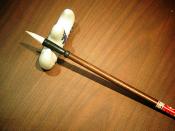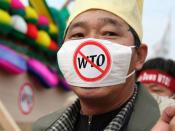China, with a population of more than one billion people, is a country full of marketing potential. With so many possible consumers, it would seem like any product could reach its target audience. However, with a country so rich in history and culture, there are many factors to be considered by marketers. Some of the most important and influential elements (the currency system, market agreements, and environmental factors of the country) must be further examined.
Currency System:
Turning our attention to the currency of China, copper and iron were used but found to be too heavy to carry and transport, and copper was becoming scarce. In the ninth century, China came up with the invention of paper money. It was originally known as "Flying Money" because it was so light compared to the heavy coins previously used. It also was said that it could "fly" out of your hands. In 1024 the Song government took over the printing of paper money and made official certificates used for currency.
In Chinese "Renminbi" means "People's Currency." The Renminbi is the sole legal currency of the People's Republic of China. Chinese currency is based on the decimal system, and consists of paper and coinage. The smallest coin is one fen, ten fen make up a jiao (also called mao) and ten jiao (or mao) make up a yuan. The paper form of Chinese currency comes in ten denominations: 1 jiao, 2 jiao, 5 jiao, 1 yuan, 2 yuan, 5 yuan, 10 yuan, 20 yuan, 50 yuan, and 100 yuan. These denominations can all be seen on the following pages.
A different set of Chinese characters is used for numbers on banknotes and other financial dealings. The Chinese use this system because ordinary Chinese numbers are easy to write, and therefore easy...


